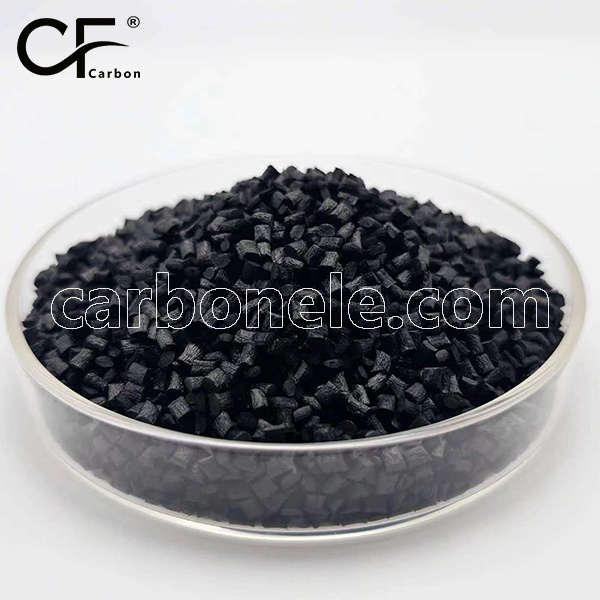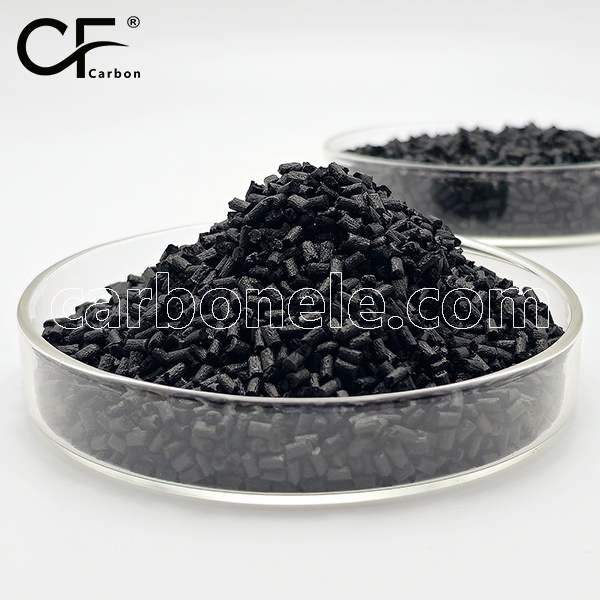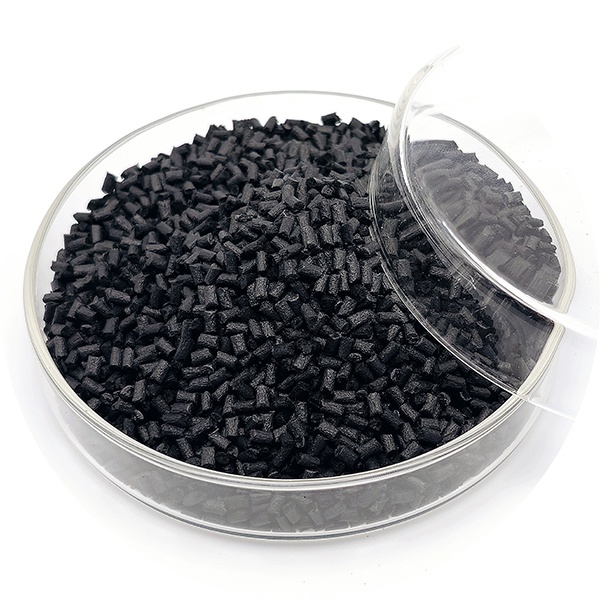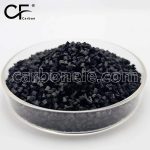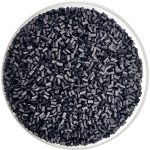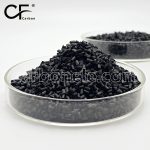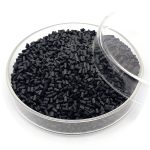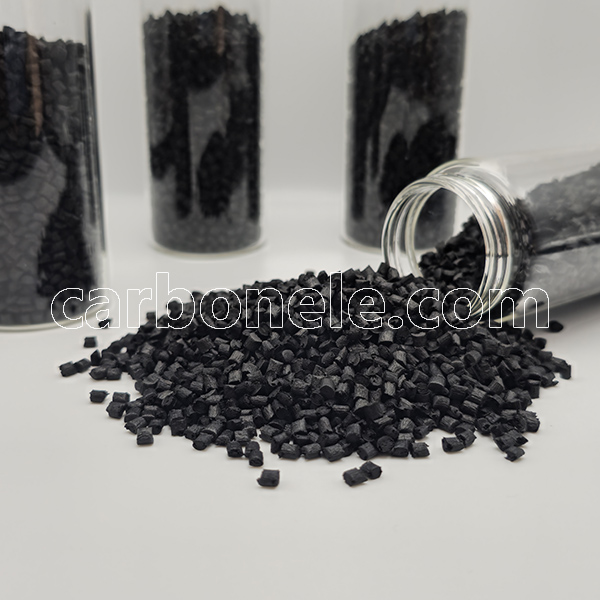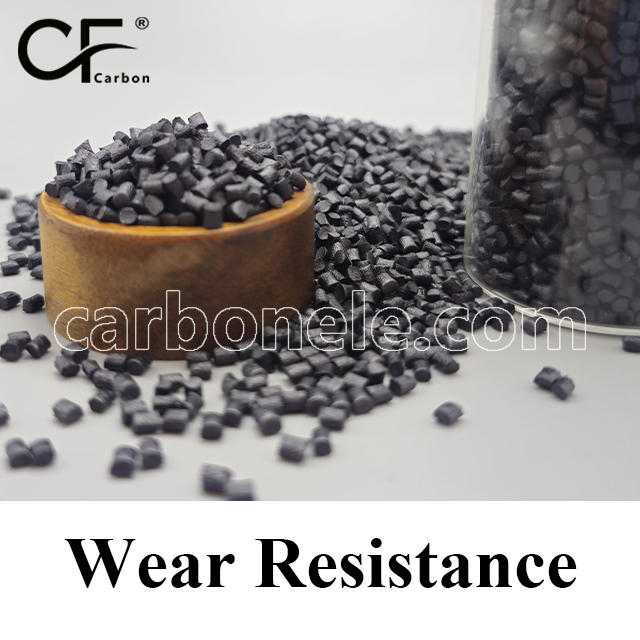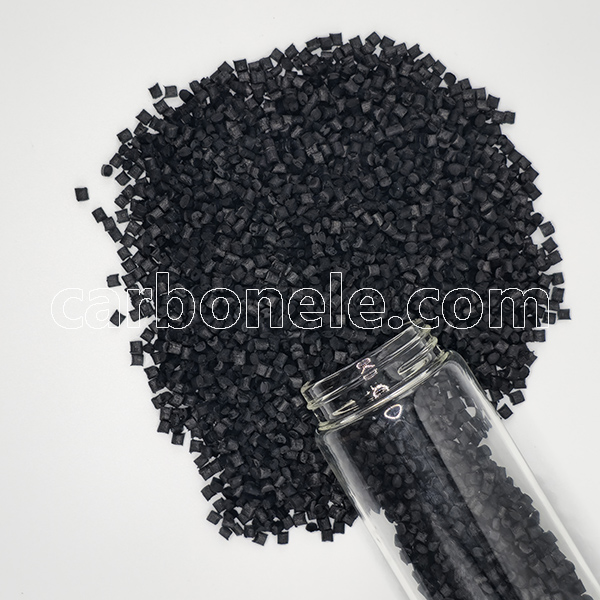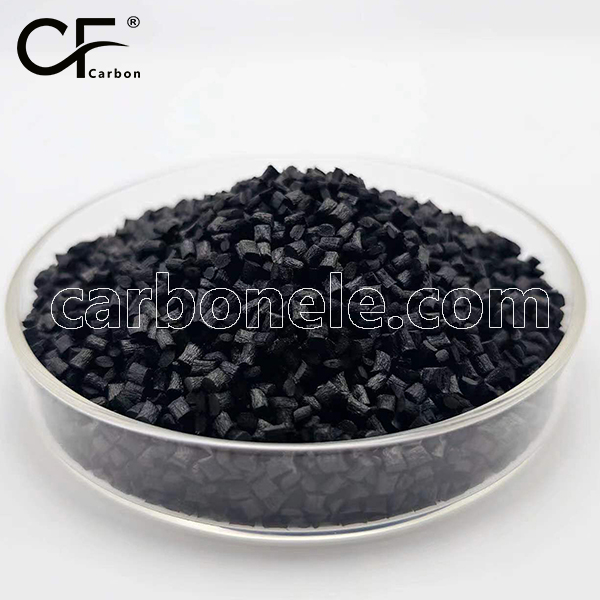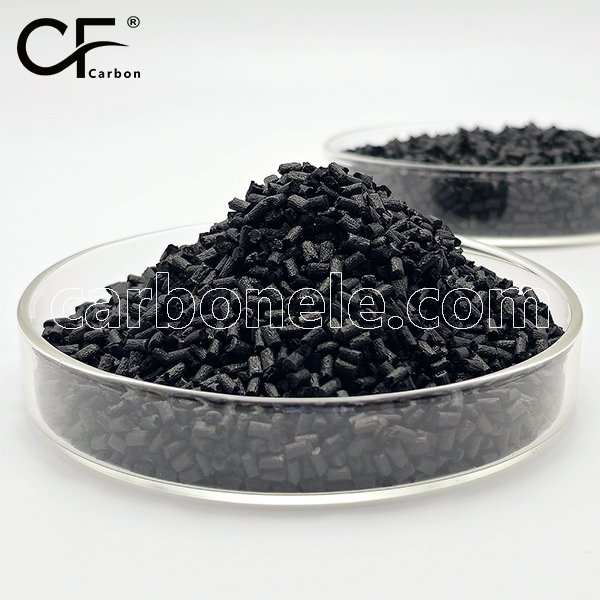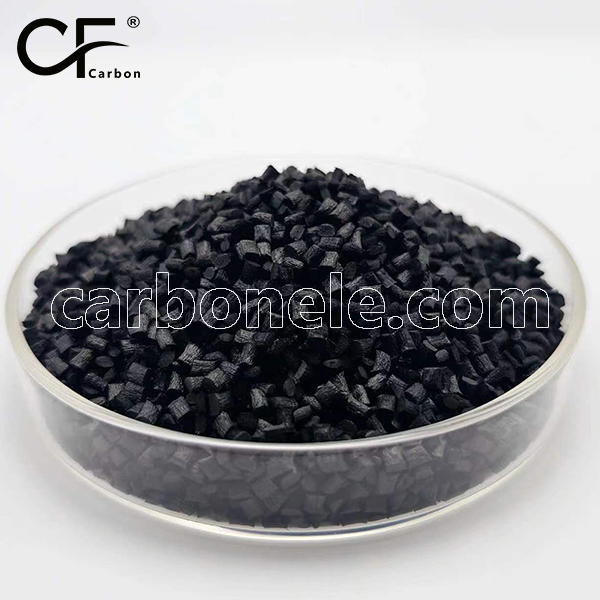
PA12 CF10 Carbon-Fiber Nylon – Lightweight Industrial Parts
PA12 CF10 carbon-fiber reinforced nylon delivers lightweight yet durable industrial parts. Ideal for brackets, housings & gears – enhancing equipment performance & longevity.
- Model number: PA12-CF-BCA10
- Matrix Resin: PA12
- Reinforcing Filler: Carbon fiber
- Appearance: Granules
- Grade: Injection/extrusion grade
- Packaging: 25kgs/bag
Introduction to PA12 CF10
PA12 CF10 is an advanced composite material that brings together the durability of nylon and the reinforcement of carbon fibers. By combining these two elements, manufacturers gain access to a material that balances strength, lightness, and resilience in a way that traditional plastics or metals cannot achieve. As industries move toward lighter yet stronger solutions, it has emerged as a favored option for lightweight industrial parts where reliability and design efficiency are critical.
The rise of innovative polymers has changed the way engineers approach product design. It CF10 not only improves structural integrity but also creates opportunities for leaner designs that reduce waste and improve overall performance. This material has gained recognition across sectors that demand a combination of endurance and efficiency.
Why PA12 CF10 Is Transforming Industrial Materials
Every industry seeks materials that perform consistently under demanding conditions. Traditional plastics can struggle under long-term stress, while metals often introduce unnecessary weight that limits performance and adds cost. It offers a powerful alternative by delivering reinforced strength without increasing overall mass. Its unique balance enables companies to design lighter, tougher, and more efficient parts.
The qualities of PA12 CF10 also make it adaptable across different environments. It is stable under stress, resilient against repeated mechanical strain, and reliable when dimensional accuracy matters most. For industrial manufacturers seeking to improve part performance, it delivers measurable benefits that extend the life cycle of critical components.
Advantages of PA12 CF10
Manufacturers choosing PA12 CF10 benefit from:
-
Lightweight properties that support ergonomic and efficient designs
-
Enhanced structural resilience that maintains shape and function under load
-
Long-term stability for demanding industrial conditions
-
Improved resistance to wear and continuous operation
These qualities distinguish PA12 CF10 as a material built not just for immediate performance but for long-lasting reliability.
Application Example: Lightweight Industrial Brackets
One of the most effective demonstrations of PA12 CF10 in action is found in lightweight industrial brackets. These brackets often form essential connections in machinery, equipment housings, and structural assemblies. They are required to handle constant loads while remaining light enough to prevent unnecessary strain on surrounding components.
When brackets are produced with it, they combine reduced weight with reinforced strength. The carbon fiber reinforcement ensures the bracket holds its form even under extended use, while the nylon matrix provides flexibility and durability. This combination results in a bracket that is easier to install, more efficient in operation, and longer lasting than parts made from standard nylon or heavy metals.
By adopting PA12 CF10 in bracket design, manufacturers reduce maintenance costs, improve system efficiency, and deliver higher performance in everyday operations.
Material Strength and Performance of PA12 CF10
The defining strength of PA12 CF10 lies in its ability to balance resilience with lightweight properties. Unlike traditional nylon, which may deform under repeated stress, it maintains structural integrity through the reinforcement of carbon fiber. This reinforcement provides dimensional stability while keeping parts lighter than comparable metal solutions.
The performance of PA12 CF10 extends beyond static strength. It also resists fatigue, which means components retain their function even under repeated loading. This makes it a reliable material for moving parts, structural supports, and industrial housings that must endure repetitive use without compromising safety or efficiency.
Industrial Applications of PA12 CF10
Although PA12 CF10 is widely recognized for lightweight brackets, its versatility allows it to be used in a wide range of industrial applications. Examples include:
Housings and Casings
For parts that require dimensional stability and precision,it provides long-term durability without the warping risks common in less advanced materials.
Connectors and Fittings
Industrial connectors produced with PA12 CF10 resist wear from repeated use, offering secure connections and extended part lifespans.
Structural Components
Supportive elements built with PA12 CF10 combine strength with reduced weight, creating efficient designs for modern machinery.
Gears and Moving Parts
In applications where wear resistance is essential, gears made from PA12 CF10 perform consistently under stress, delivering reliable functionality in continuous operations.
These applications demonstrate the adaptability of PA12 CF10, making it a material that meets the needs of varied industries.
Why Manufacturers Prefer PA12 CF10
The choice of material can determine the efficiency and competitiveness of a product. When comparing PA12 CF10 to alternatives, the benefits become clear. Standard nylon often fails to maintain its form under high stress, while metals may add excessive weight that reduces efficiency and complicates manufacturing.
It offers the middle ground: strength that rivals metals with the lightness of engineered polymers. This allows manufacturers to deliver components that are both durable and efficient, ensuring higher customer satisfaction and better market competitiveness.
Long-Term Reliability of PA12 CF10
Reliability is essential in industrial design. Components must not only meet performance standards at launch but also continue to deliver value throughout their lifecycle. It ensures this reliability by resisting deformation, wear, and fatigue across extended use.
This long-term performance reduces the frequency of part replacement, lowers maintenance costs, and ensures continuous system operation. For industries where downtime is costly, It provides assurance that parts will endure real-world conditions over time.
Expanding Uses of PA12 CF10 Beyond Industry
Although the industrial sector forms the core of PA12 CF10 usage, its advantages extend to automotive, aerospace, and consumer applications. Lightweight housings in vehicles, reinforced connectors in aerospace equipment, and durable casings in consumer goods all benefit from the combination of nylon flexibility and carbon fiber reinforcement.
This wide adaptability ensures PA12 CF10 remains relevant as industries evolve toward designs that emphasize both performance and efficiency.
Future Trends with PA12 CF10
The demand for lightweight, resilient, and sustainable materials continues to grow. It sits at the forefront of this trend by offering a solution that aligns with modern manufacturing priorities. As industries look for ways to cut energy use, extend product lifespans, and improve operational efficiency, it provides a path forward.
The material’s adaptability ensures it will continue to play a central role in new product development. Whether in industrial machinery, advanced transportation, or everyday consumer goods, it is shaping the future of material innovation.
Conclusion: The Role of PA12 CF10 in Modern Manufacturing
PA12 CF10 is more than just a polymer blend. It represents the intersection of strength, lightness, and design flexibility. For manufacturers producing lightweight industrial parts, it offers durability, reliability, and cost efficiency that surpasses traditional options.
From lightweight brackets to housings, connectors, and gears, it delivers a consistent level of performance that meets the high expectations of modern industries. Its role in shaping the next generation of industrial materials makes it not only a solution for today but also a foundation for tomorrow’s innovations.
If you want to get more information about PPSU-CF60, you can visit our YouTube.
Content Block 1
Morbi iaculis at quam vel faucibus. Ut semper ipsum ex, quis aliquet justo pretium a. Suspendisse scelerisque metus augue, a interdum leo iaculis sed. Vivamus sit amet nunc odio. Duis vel pulvinar dolor, at lacinia tellus.
Pellentesque habitant morbi tristique senectus et netus et malesuada fames ac turpis egestas. Suspendisse lacinia quam a elit lobortis tempor


Content Block 1
Morbi iaculis at quam vel faucibus. Ut semper ipsum ex, quis aliquet justo pretium a. Suspendisse scelerisque metus augue, a interdum leo iaculis sed. Vivamus sit amet nunc odio. Duis vel pulvinar dolor, at lacinia tellus.
Pellentesque habitant morbi tristique senectus et netus et malesuada fames ac turpis egestas. Suspendisse lacinia quam a elit lobortis tempor

Frequently Asked Questions
Carbon (Xiamen) New Material Co., Ltd. aims to provide buyers with "one-stop" worry-free high-quality services. Here you can find all information about carbon fiber engineering plastics. If you still have questions, please send us an email for consultation!
-
How can I contact the manufacturer of a product that interests me?
When you find a product you are interested in, you can contact the manufacturer directly by sending an email and we will get back to you as soon as possible.
-
How do I find the products that interest me?
All you need to do is enter the keyword, product name in the search window and press the Enter key on your keyboard. Your search results page will then be displayed. You can also search within the product category pages on the home page. Each category is divided into subcategories, allowing you to refine your search and find products that interest you.
-
Where will I find a buying guide?
Please contact our after-sales service directly and we will provide you with a comprehensive operating guide.
-
What are CF Reinforced Thermoplastic Composites?
CF Reinforced Thermoplastic Composites are materials where carbon fibers are incorporated into a thermoplastic matrix. They combine the strength and stiffness of carbon fibers with the processability and recyclability of thermoplastics. For instance, they are used in automotive parts like bumper beams.
-
What are the benefits of CF Reinforced Thermoplastic Composites over traditional composites?
The key benefits include faster production cycles, easier recyclability, and better impact resistance. They also offer design flexibility. An example is in the manufacturing of consumer electronics casings where complex shapes can be achieved more easily.
-
How are CF Reinforced Thermoplastic Composites processed?
Common processing methods include injection molding, extrusion, and compression molding. Injection molding is widely used for mass production. For example, in the production of small components for the medical industry.
-
What industries use CF Reinforced Thermoplastic Composites?
They are utilized in aerospace, automotive, medical, and sports equipment industries. In aerospace, they can be found in interior components. In the medical field, they might be used in prosthetics.
-
How does the carbon fiber content affect the properties of the composites?
Higher carbon fiber content generally leads to increased strength and stiffness but may reduce ductility. A moderate content is often balanced for specific applications. For example, a higher content might be preferred in structural parts of a race car.
-
What are the challenges in using CF Reinforced Thermoplastic Composites?
Challenges include higher material costs, complex processing equipment requirements, and ensuring uniform fiber dispersion. Issues with adhesion between the fibers and the matrix can also arise. An example is in achieving consistent quality in large-scale production.







